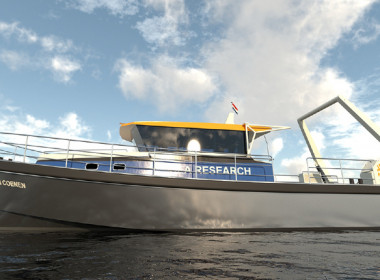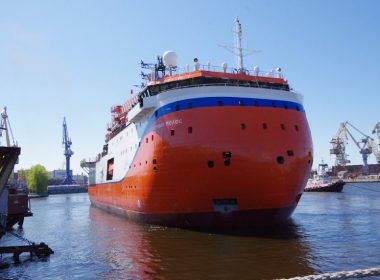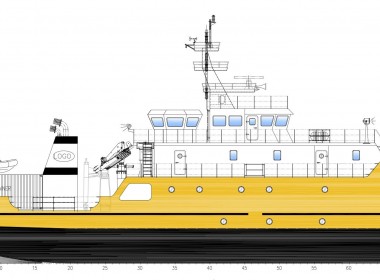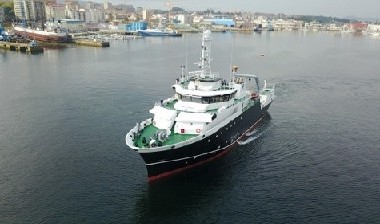VESSEL REVIEW | Adriaen Coenen – Shallow-draught workboat enters service with Dutch sea research organisation

The Royal Netherlands Institute for Sea Research (Nederlands Instituut voor Zeeonderzoek; NIOZ) recently took delivery of a new locally built aluminium workboat to replace an older vessel in the coastal research support role. Built by Next Generation Shipyards in Lauwersoog to a design by Marimecs, Adriaen Coenen is named after a 16th Century Dutch fish trader who became a leading figure on marine research after initially having taken it up as a hobby.
The workboat measures 19 by five metres and features work spaces for two crewmembers and 12 passengers or scientists. A draught of only 0.85 metres allows the vessel to pass through slack waters at high tide and safely beach itself on sandbars if needed.
The vessel’s compact size and light weight make it suitable for day trips for the fast and flexible collection of research samples, which can then be further processed at the nearby NIOZ facilities. This then frees up the NIOZ’s larger scientific vessels for extended duration offshore missions that do not necessarily require frequent return trips just to offload collected samples.
The new vessel will also be used to tow or push small objects including a mobile platform for bird observation. For research activities, the vessel is fitted with hoisting equipment, a spacious working deck with room for two rubber dinghies or a 10-foot container, arrangements for deployment of ADCP and multi-beam equipment, wet and dry laboratories, ICT infrastructure and communication equipment.
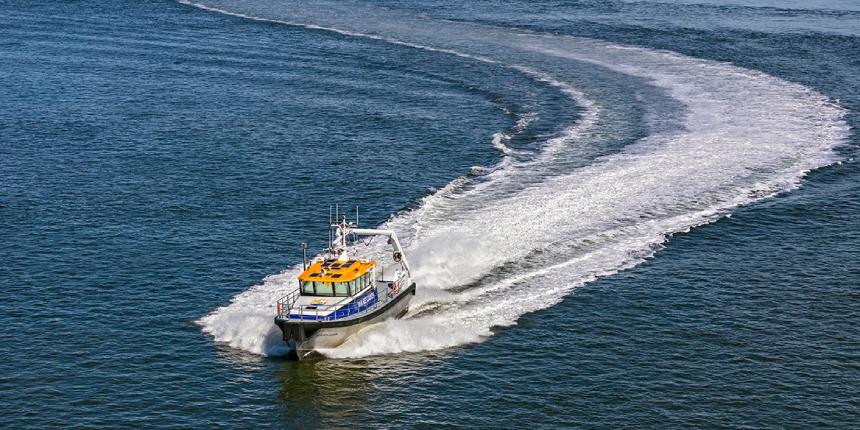
Power is provided by two Scania EU Stage V engines that drive Hamilton waterjets to deliver a maximum speed of 20 knots.
The engines are designed to run on hydrotreated vegetable oil (HVO) as a low-emission substitute for diesel. NG Shipyards said this will ensure CO2 emissions of as much as 90 per cent.
The electronics include a station keeping system and a Radio Holland radar. These and other systems draw power from onboard batteries, which in turn draw their power from solar panels fitted on the roof of the wheelhouse. During stays in port, the batteries are charged via shore power connections. Backup electrical power is supplied by a small generator.
The NIOZ said the array of equipment is designed to minimise energy consumption and to reduce waste. Features that help achieve these include a cooling water system fitted with a heat recovery system, additional thermal insulation, and LED lighting that is activated by motion sensors.
Adriaen Coenen will be operated primarily in the Wadden Sea, transporting personnel and supplies from Texel to Griend, Richel or Harlingen. The HVO propulsion is ideal for these waters, which are also a UNESCO World Heritage Site.
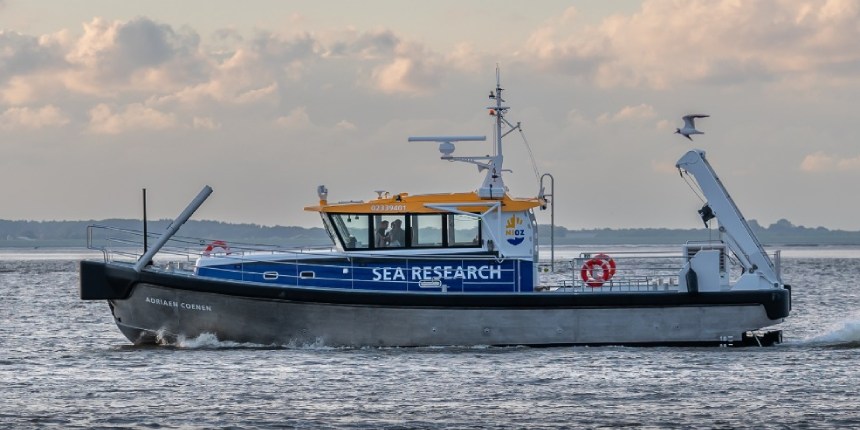
| Adriaen Coenen | |
| SPECIFICATIONS | |
| Type of vessel: | Research vessel |
| Flag: | Netherlands |
| Owner: | Royal Netherlands Institute for Sea Research |
| Designer: | Marimecs, Netherlands |
| Builder: | Next Generation Shipyards, Netherlands |
| Hull construction material: | Aluminium |
| Length overall: | 19 metres |
| Beam: | 5.0 metres |
| Draught: | 0.85 metres |
| Main engines: | 2 x Scania |
| Propulsion: | 2 x HamiltonJet |
| Radar: | Radio Holland |
| Other equipment installed: | Solar panels |
| Interior lighting: | LED |
| Type of fuel: | Hydrotreated vegetable oil |
| Crew: | 2 |
| Passengers: | 12 |
| Operational area: | Wadden Sea, Netherlands |


